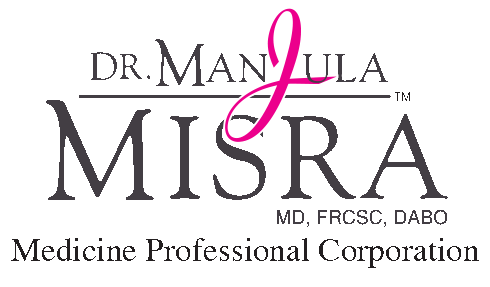Botox™ for Blepharospasm / Hemifacial Spasm
Botulinum toxin has been used for decades by ophthalmologists and neurologists in ocular conditions such as blepharospasm, an excessive involuntary contraction of the eyelid muscles that forces the eyelids closed, and hemifacial spasm, an excessive involuntary contraction of the facial muscles on just one side of the face.
For certain types of double vision, botulinum toxin can be injected directly into the eye muscle opposite the paralyzed eye muscle. In recent years, its use has expanded to include a number of medical as well as cosmetic applications. For example, back pain, migraine and muscle spasm in patients with cerebral palsy and stroke are some of the conditions that are being successfully treated with Botox™.
Patients with excessive sweating of the palms and underarms ("hyperhydrosis") can also be helped with Botox™.
Botulinum toxin is injected directly into muscles of the face or eye when facial muscles are overactive, thus causing the overactive muscles to relax. A very fine needle is used to minimize discomfort. It usually takes a few days for the therapeutic effect to be noticeable. The injections need to be repeated every 3 to 4 months.
For cosmetic purposes, Botox™ treats “dynamic wrinkles”, that is, those that are accentuated by facial expressions. Thus, patients with frown lines between the eyebrows, wrinkles of the forehead or crow’s feet can consider using Botox™ to soften and in many cases eliminate their wrinkles. Mild asymmetry or drooping of the brows may also be possibly addressed by Botox™ treatment, as may upper lip lines. Some patients who have repeated treatments find that the effect can last longer than 3-4 months. A judicious treatment will give your face a fresh and rejuvenated look, not a frozen one.
Side effects of the injection are relatively rare. Most concerns with Botox™ are related not so much to a side effect of the medication, but rather to its expected effect at an inappropriate location, such as a droopy upper eyelid, double vision, or inability to close the eyelids. In experienced hands, these effects are exceedingly rare.
Botox™ treatments for blepharospasm and hemifacial spasm are covered by OHIP; cosmetic treatments are not.
Patients with blepharospasm or hemifacial spasm can find more information at:
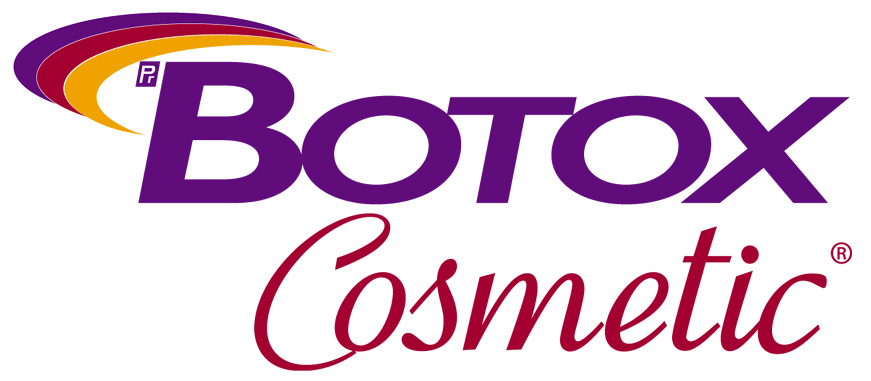
Botox Cosmetic™ is the same product, labelled for cosmetic use. It can be used to treat dynamic wrinkles, that is, wrinkles that form as a result of muscle contraction, such as around the eyes and on the forehead. The treatments will typically last three months.
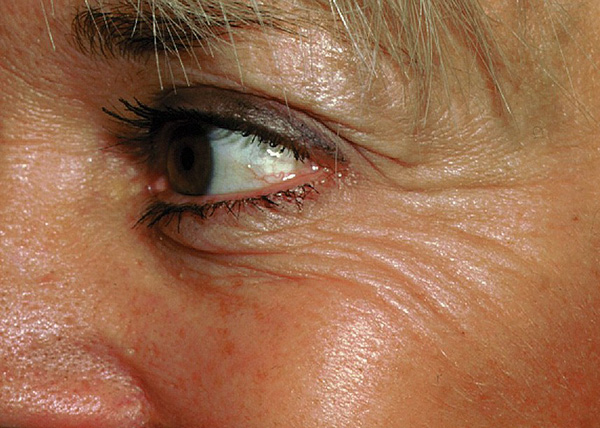
Before Botox Cosmetic™ Treatments
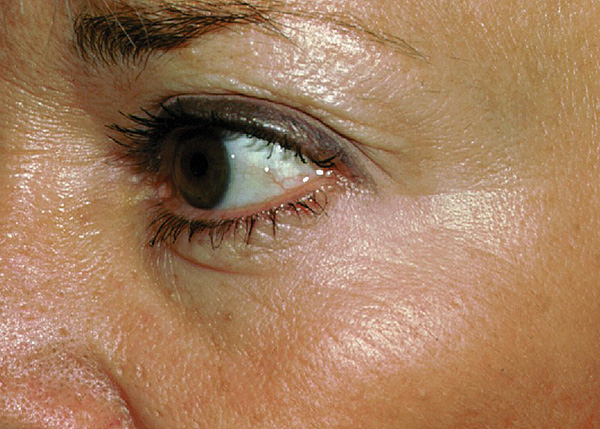
After Botox Cosmetic™ Treatments
Among its numerous cosmetic applications, Botox can be used to lift the eyebrows as well as to remodel the jaw line. This is achieved by softening the downward pull of a muscle called the Platysma, as well as by relaxing a muscle of the jaw called the Masseter Muscle. In more dilute concentrations, Botox can improve skin tone and texture through its effects on the glands of the skin.
Dermal Fillers
Fillers for skin and facial rejuvenation
Is there anyone who isn't convinced that they can spot a person who has had Botox Cosmetic™ (Botox) or fillers from a mile away? And yet, the reality is that the best enhancements look natural. Done properly, only you should know that you had the treatment. Everyone else should think you look rested! Proper treatment should never distort a person's features by trying to wipe out every last line or fold, or in the pursuit of looking like someone else. We can all detect Botox and fillers when they are done improperly.
What is the difference between Botox™ and fillers? Botox™ is the brand name for a drug that stops muscle contractions for up to three months at a time. It is used for dynamic lines, that is, lines that are formed as a result of muscle contraction. These are the lines that occur in the forehead, between the eyebrows and around the lips. In dilute doses, they can reduce "fan lines" on the cheek and improve skin texture. This is commonly known as Micro-Botox.
Fillers, as their name implies, are products that are injected into the skin in order to correct wrinkles, folds and skin imperfections, as well as to remodel facial contours. As we age, we lose volume in the fat pads under our skin, as well as from our facial bones. With this loss of volume, the overlying skin can sag. The one exception is the nasolabial fat pad, which actually get bigger with age. Dermal fillers are made of hyaluronic acid, one of the building blocks of the skin.
Potential uses of fillers
To reduce the appearance of bags under the eye (Teosyal Redensity II)
This is known as the tear trough area. Teosyal Redensity II is the only product that is approved by Health Canada for this purpose. It has properties that make it ideal for use in the undereye area, to improve concavity and refresh the appearance, while remaining invisible under the very thin eyelid skin (minimizes the Tyndall effect). The application of filler in this area also reduces the appearance of shadowing under the eyes. An added benefit of Redensity II is that it contains peptides and antioxidants, molecules that improve the quality of the skin by penetrating into it from underneath. This is much more effective than skincare applied to the surface of the skin, which cannot reach the deeper layers. In some situations, patients requesting rejuvenation of the under-eye area will be advised to begin with volumization of the mid-cheek area. The appropriate treatment for each patient depends on their own anatomy.
To improve texture of the skin (Teosyal Redensity I)
Teosyal Redensity I has properties that make it ideal to reduce superficial wrinkles and creasing. It is injected into the most superficial layers of the skin. This type of treatment is called mesotherapy. Like Redensity II, Redensity I contains antioxidants and peptides that improve skin structure. This treatment can be administered in conjunction with Micro-Botox, a technique where very dilute Botox Cosmetic™ is injected into superficial layers of the skin to reduce crease lines.
To reduce wrinkles and folds in the skin
Various areas of the face can be enhanced by adding volume to the superficial layers of skin. These include crow's feet, nasolabial folds, and creases around the mouth.
To add volume in areas such as the cheeks and lips
In these areas of the face, the goals of treatment can be to restore a youthful appearance, or to conform to prevailing trends while maintaining a natural appearance.
Fillers are not one-size-fits-all
There are a variety of products that have varying properties, such as strength and elasticity, that can be chosen depending on the area and extent of correction needed.
These products are not derived from animal sources, and do not require skin testing prior to treatment. They contain anaesthetic agent to minimize discomfort during treatment. Because our bodies produce the same kind of hyaluronic acid that is in dermal fillers, we also produce enzymes that break it down. Depending on the type of product used and the location of injection, fillers will last for a variable amount of time before being broken down into component molecules and water by enzymes in the skin. They do not stop the aging process, but they do slow it down. Retouching sessions will be required after variable periods of time. Discussion about reasonable expectations would be had at the pre-treatment consultation.
As with Botox Cosmetic™, dermal fillers are a highly effective, temporary treatment. They are relatively safe in appropriate candidates, but they are not risk free. Experienced injectors understand the three dimensional anatomy of the face, the tissue layers and the blood supply in order to minimize complications. A careful evaluation of each individual's medical history will be the first step of the pre-treatment consultation, to provide the optimal result.
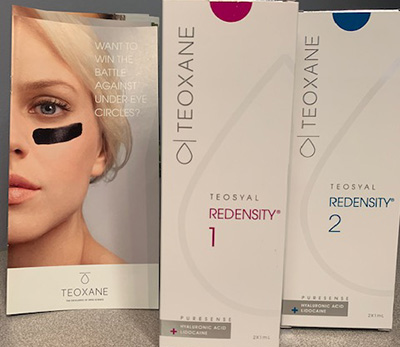
Teosyal Redensity Fillers
